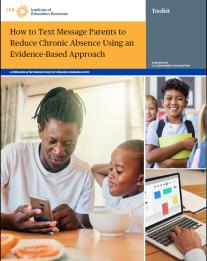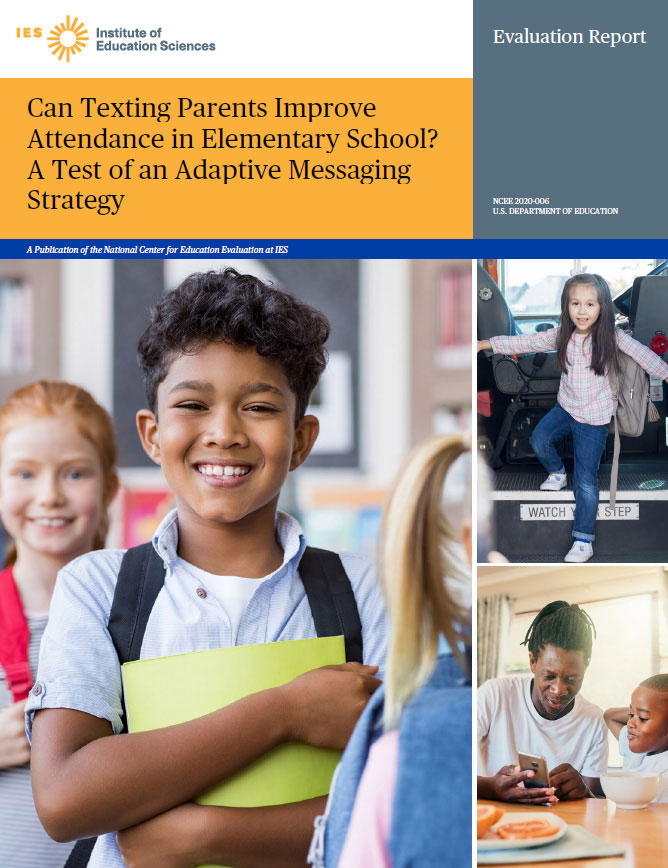Can Texting Parents Improve Attendance in Elementary School? A Test of an Adaptive Messaging Strategy
View the report (PDF)
Chronic absence is a nationwide problem, even among young students. Those with poor attendance are more likely to face challenges later in school and in life. This study tested four versions of an adaptive text messaging strategy to see which, if any, would reduce chronic absence—defined as missing 10 percent or more of school days—among 26,000 elementary school students.
During the fall of the study year, families randomly assigned to one of the text messaging groups received “basic” messaging, which consisted of low-cost, low-burden weekly reminders about the importance of attendance and same-day notifications when their children missed school. In the spring, messages were “adapted”: parents of students with few absences continued with the basic messaging, while parents of students who were frequently absent in the fall received additional intensified messaging.
The study compared two approaches to basic messaging and two approaches to intensified messaging, to learn how a texting strategy might work best. Students in the messaging groups were compared to students whose parents received no messages to rigorously assess whether the messaging improved attendance and achievement.
Key Findings
- All four versions of the adaptive text messaging strategy reduced chronic absence. The messaging lowered the expected chronic absence rate of 20.5 percent for students overall by 2.4 to 3.6 percentage points. For students with a prior history of high absence, the messaging lowered the expected chronic absence rate of 47.1 percent by 3.5 to 7.3 percentage points.
- The two approaches to basic messaging were similarly effective at reducing chronic absence, but one approach to intensified messaging was better than the other for certain students. The two approaches to basic messaging compared whether it was better to focus on the benefits of attending school or the consequences of being absent—the study found both approaches were equally effective. But intensified messaging that involved school staff directly texting parents reduced chronic absence rates in the spring more than the other more automated intensified approach, for students with a prior history of high absences.
- The text messaging strategy did not improve achievement. Although the four versions of adaptive text messaging improved student attendance, they did not improve reading or mathematics achievement during the study year for students in Grades 3 through 5.
Resources for School Districts

As a part of the project the study team created a toolkit, How to Message Parents to Reduce Chronic Absence Using an Evidence-Based Approach, to help districts to implement the evidence-based strategy to reduce chronic absence in elementary grades. The toolkit:
- Helps district staff assess their needs, examine capabilities, and plan to implement the messaging;
- Describes key actions to set up and monitor a text messaging system and provides information about security and privacy considerations; and
- Provides a set of tools and resources to support the district’s work on both Parts I and II. The Example Attendance Text Messaging Blueprint is the same blueprint that was used in the Parent Messaging Study.


